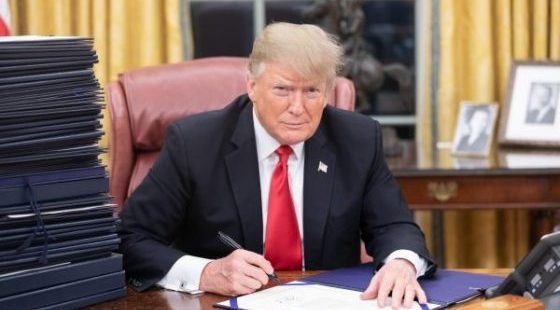Outsmarting K9s: How to Hide Your Stockpile from Police Dogs
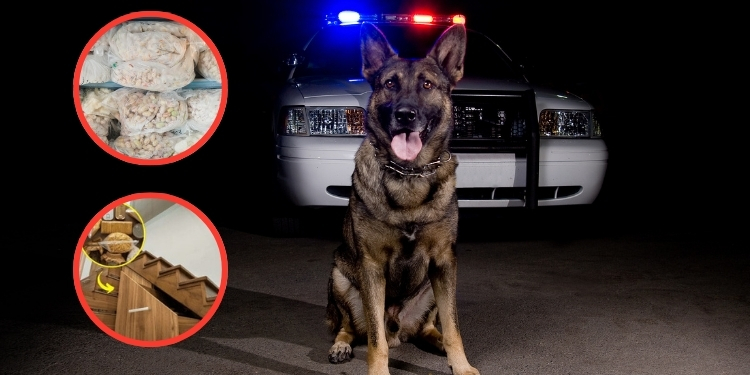
Recently, I published an article called Prohibition Era Secrets for Hiding Your Stockpile. In the comments section, many readers pointed out that those old tricks wouldn’t stand a chance against trained dogs able to sniff out almost anything.
So today, I want to address that exact concern with a special article.
We’re going to take a close look at K9s: what they are, their history, who uses them, and why. More importantly, we’ll talk about how you can outsmart them—not by doing anything illegal, but by making a solid, thought-out plan to protect your stockpile when the world goes sideways.
What Are K9s and Why Are Dogs Called K9s?
The term “K9” is a play on words. When you say “K9” out loud, it sounds exactly like “canine,” the Latin root for dog. Over time, the abbreviation became the official term for trained service dogs working in law enforcement, military, and rescue units.
But the partnership between humans and dogs is ancient. Armies used dogs for war as far back as the Romans, and hunters relied on their tracking ability for thousands of years. In the Middle Ages, mastiffs were fitted with armor and unleashed on enemy soldiers.
The first organized police dog programs began in 19th-century Europe, especially in Belgium and Germany. German Shepherds quickly became the favorite breed for their intelligence, strength, and loyalty. By World War I, military dogs were already acting as messengers, medics’ aides, and guards.
In America, K9 units really expanded in the 1970s. Today, they’re not just trained to attack or chase criminals. They can detect narcotics, explosives, firearms, missing persons, human remains, currency, and even hidden electronics.

That incredible versatility comes from one thing: their sense of smell. A dog’s nose can be 10,000 to 100,000 times stronger than a human’s. To put that in perspective, a K9 can smell a single teaspoon of sugar in a million gallons of water.
That’s bad news for any prepper. Because it means your stockpile isn’t just vulnerable to thieves or neighbors. It could be exposed if authorities decide to use dogs to search homes during a crisis.
What Agencies Use K9s in America?
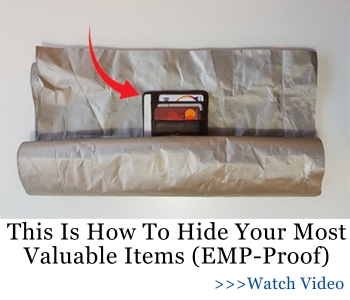 When you think of police dogs, you probably imagine them with local law enforcement. And you’d be right—most city and county police departments maintain their own K9 units. But they’re not the only ones. Here are the main agencies in the U.S. that deploy K9s:
When you think of police dogs, you probably imagine them with local law enforcement. And you’d be right—most city and county police departments maintain their own K9 units. But they’re not the only ones. Here are the main agencies in the U.S. that deploy K9s:
- Local Police Departments and Sheriff’s Offices – for narcotics detection, suspect apprehension, and search and rescue.
- State Police and Highway Patrol – often trained to detect drugs, weapons, or cash during traffic stops.
- The FBI – uses K9s for counterterrorism, evidence recovery, and bomb detection.
- The ATF (Bureau of Alcohol, Tobacco, Firearms, and Explosives) – focuses on explosives and arson investigations.
- The TSA (Transportation Security Administration) – trains dogs to detect explosives in airports and transportation hubs.
- Customs and Border Protection (CBP) – employs K9s to sniff out drugs, weapons, and smuggling at the borders.
- The U.S. Military – for bomb detection, patrol, and combat support.
- FEMA – you guessed it. The Federal Emergency Management Agency maintains K9 units for disaster response, particularly search and rescue after earthquakes, floods, or building collapses.
In normal times, these dogs are used for law enforcement, security, and rescue. But in a post-collapse scenario, don’t be surprised if the very same agencies—or their remnants—deploy K9s for “confiscation and redistribution” of food, fuel, firearms, or medicine.
History has shown us: when governments face shortages, rationing and forced collection usually follow.
>> Ex-Pentagon Officer Warns: The Last Reset Has Already Begun
What Will K9s Be Asked to Look For Post-SHTF, Including in Your House?
This is the part that concerns most preppers. Imagine martial law, rationing, or FEMA handing out “official” food supplies while confiscating anything they consider hoarding.
K9s could be tasked with:
- Finding food – Dogs can pick up the scent of grains, meats, and even vacuum-sealed goods. Remember, their noses are sensitive enough to detect trace odors through plastic or thin barriers.
- Locating firearms and ammunition – Some units already train dogs to detect gunpowder or weapon oil.
- Tracking medicine – Dogs can identify prescription pills, especially if poorly sealed.
- Searching for hidden people – In a world where hiding family members or refugees might become necessary, K9s can track human scent through walls or underground.
- Detecting cash or barter items – Believe it or not, some K9s are trained to locate currency, since ink and paper have a distinct odor.
In other words, if it has a scent—and almost everything does—it’s fair game.
Of course, this is a worst-case scenario based on historical patterns, like government rationing during wartime or economic crises.
In normal times, K9s are critical tools for law enforcement and rescue, not tools for targeting preppers.
But as a prepper, planning for extreme scenarios means thinking ahead about what could happen if resources become scarce and authorities prioritize control over supplies.
Can K9s Detect Your Water Stockpile?
If food, ammo, and medicine are on the confiscation list, what about water?
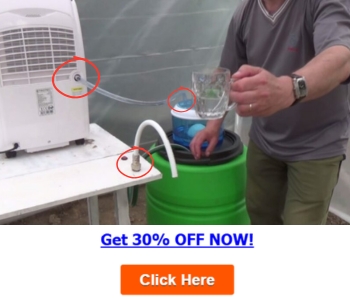 History and common sense both suggest that FEMA—or any authority managing “relief”—would absolutely target private water stockpiles.
History and common sense both suggest that FEMA—or any authority managing “relief”—would absolutely target private water stockpiles.
After all, you can survive weeks without food, but only three days without water.
That makes it one of the most valuable resources in a crisis.
The good news is that K9s can’t be trained to detect clean, sealed water. Pure water is odorless to the canine nose.
Unlike food or fuel, it doesn’t give off volatile scents that can be tracked.
That means your barrels, tanks, or sealed containers of drinking water are effectively invisible to a dog team.
But that doesn’t mean you’re in the clear. Poorly sealed containers, algae growth, or added chemicals (like chlorine tablets) can produce trace odors.
If you’ve stored your water near food or fuel, scent transfer can also betray you. And remember—dogs aren’t the only threat. Human inspectors can spot large barrels, rain catchment systems, or improvised wells in plain sight.
Don’t rely on dogs ignoring your water. Store it discreetly, keep it sealed and clean, and whenever possible, integrate it into ordinary structures: rain barrels that look like landscaping, cisterns disguised as garden features, or water caches buried in sealed drums.
Some Smart Workarounds
Don’t get me wrong—it’s very smart to have a water stockpile, as long as you store it properly and avoid the risk of it going bad.
That said, I’d recommend a much cleverer alternative. You know the old saying: “If you give a man a fish, he will eat for a day, but if you teach a man how to fish, he will eat for life.”
Base your strategy on that. Keep only as much water as you need for the short term.
For the long term, don’t rely on the water you already have—rely on the water you can produce yourself.
There are several ways to do this. Rainwater collection is one option, but depending on rain alone can be risky. So what if you could rely on… air?
First, it’s possible. Second, it’s extremely smart. How can you extract water from the air? Here are a few options:
- The Water Freedom System – designed to produce a good amount of water with minimal effort. The plan is simple, and the materials required are not unusual—you might already have them at home.
- The Infinite Water Bottle – a system that’s very easy to assemble and move. In other words, you can use it even if you need to bug out. It’s basically a backpack-sized water generator. I like this solution also because it’s based on U.S. Army plans used to supply water to troops in some of the driest fronts in the world. Recently, these plans were declassified, and now anyone can put them into practice—including you…
- The Smart Water Box – another simple, portable option that’s compact in size. Perfect for situations where you don’t want to generate huge amounts of water.

The main advantages of these workarounds are:
- Ease of Assembly – if SHTF and inspections are likely, you can disassemble and reassemble the components quickly.
- Portability – you can take these systems with you to any bug-out location.
- Purity – the water produced is clean, meaning you won’t need filters or chlorine tablets. That also makes detection much harder.
Can K9s Be Outsmarted?
Here’s the hard truth: you won’t “fool” a dog’s nose with pepper, perfume, or coffee grounds. Those old myths don’t work. Dogs can separate and identify individual scents even when mixed together.
But that doesn’t mean you’re helpless. Outsmarting a K9 isn’t about blinding its senses—it’s about strategy, planning, and misdirection. Here are practical, legal ways to tilt the odds in your favor:
Use Depth and Layers
Don’t just bury food in a shallow hole with a tarp. Use multiple barriers—glass jars inside sealed buckets, stored in metal containers, then buried deep. Each layer reduces trace odors. If you can, use materials like Mylar bags with oxygen absorbers to further seal contents, then place those inside five-gallon buckets with gasket lids.
Adding an outer layer of heavy-duty plastic or even concrete pavers above the cache creates yet another obstacle for both moisture and odor escape. Dogs might detect a single seal, but layered barriers make the scent trail weaker with every step.
Hide in Plain Smells
 Nature produces strong odors that overwhelm an area. Compost piles, manure, or livestock areas are noisy with scent. A well-sealed container buried beneath a chicken coop or near a barn is less suspicious.
Nature produces strong odors that overwhelm an area. Compost piles, manure, or livestock areas are noisy with scent. A well-sealed container buried beneath a chicken coop or near a barn is less suspicious.
You can also use natural masking agents like cedar chips, lime, or even strong-smelling herbs to add another layer of confusion.
For example, storing buckets inside sealed metal bins and then surrounding them with ammonia-rich soil or barn bedding makes it far less likely for a K9 to isolate your stash from the everyday chaos of farm smells.
These environments create constant “scent noise,” drowning out anything unusual.
I learned this from Eddie Swartzentruber, a former member of the Amish community. Born and raised among them, he wrote The Amish Ways Book.
In it, he goes into great detail about the secrets these off-grid survival experts have mastered, including:
👉 Today only, you can get The Amish Ways Book at a 76% discount (Coupon Number: X43LC2V)
Scatter and Redundancy
Never put all your supplies in one place. A single discovery could cost you everything. Instead, spread caches across your property—or even off your property. Consider using PVC tubes capped at both ends,
Mylar bags hidden in wall cavities, or even small waterproof cases submerged in ponds or streams. The more creative and varied your hiding spots, the harder it becomes for a dog team to systematically clear them all. Redundancy also gives you peace of mind—if one cache is lost, the rest remain untouched, and your survival plan stays intact.
Create Decoys
Sometimes the best strategy is to let them find something. Keep a “decoy pantry” with a modest supply of expired cans or half-used goods. If they find it, they may stop looking.
To make it more convincing, store the decoy in common places like a shed, basement, or closet—somewhere obvious but not too sloppy. You can even use non-sealed bags or weak containers so that, unlike your real stockpile, they allow faint odors to escape.
That way, the K9s alert to the decoy first, satisfying their handlers while your true cache remains secure elsewhere.
Blend with Ordinary Items
Hide food inside sealed paint cans, ammo inside toolboxes, or medicine in old electronics. To a dog, the smell is faint; to a human searcher, it just looks like junk.
Using strong-smelling household materials like motor oil, grease, or paint as natural odor barriers makes these caches blend even more effectively. For instance, an old toolbox full of oily rags can conceal a vacuum-sealed ammo box inside without drawing suspicion.
The trick is choosing containers that fit naturally in the environment—things no one would question or bother opening during a hurried search.
The same goes for many common medications—including the 4 types of antibiotics every prepper should stockpile.
Either way, you need to do everything you can to keep your medicine supply safe.
After all, there are conditions that can kill you very quickly post-SHTF. This is especially true if you suffer from:
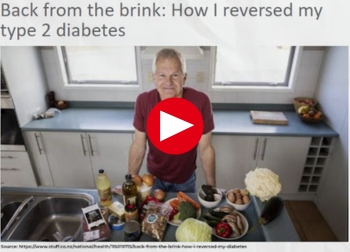 For all these conditions—and many more—modern medicine provides treatments that help you stay alive and manage symptoms.
For all these conditions—and many more—modern medicine provides treatments that help you stay alive and manage symptoms.
On the other hand, if you want to actually become healthier, I recommend complementing your medicine supply with natural remedies.
In this book, you’ll find no fewer than 45 herbal protocols for common ailments, including the ones mentioned above.
Control Access and OPSEC
The fewer people who know about your stockpile, the safer it is. No method works if a neighbor or relative tips off authorities.
You must be aware that outsmarting a K9 is no easy feat. These dogs are trained with their handlers to work as a team, often using systematic search patterns like grids or scent cones to pinpoint odors.
Handlers are skilled at reading their dogs’ behavior and can adjust their approach based on the environment. Even with the best planning, success isn’t guaranteed!
It depends on the dog’s training, the handler’s persistence, and the conditions of the search. Still, with careful strategy, you can make it much harder for them to find your stockpile.
What About Your Own Dogs?
Many preppers keep dogs for protection, companionship, or early warning. But what happens if your dog crosses paths with a K9 unit? Here’s what you need to know:
- K9s are trained to ignore other dogs – During work, they’re focused on task, not play. However, conflicts can still happen if your dog feels territorial.
- Your dog can be a liability – Barking or agitation can draw attention right to where you don’t want it.
- Scent transfer is real – If your pet brushes against your hidden cache, they may carry trace scents elsewhere, confusing or even aiding a K9 search.
Train your dog, control their movement around hidden supplies, and never assume they’ll deter a professional K9.
Dogs are man’s best friend—and for good reason. Beyond offering you companionship and loyalty, they can also play a critical role in home defense (learn all about it from here).
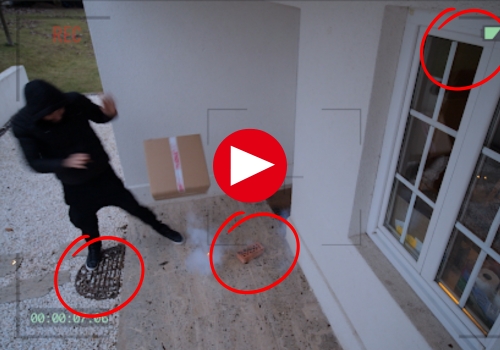
A well-trained dog can keep looters at bay and stand by your side in the toughest situations.
Speaking of home defense, I recommend you complete your home security strategy with this full Anti-Looter Kit.
I’ve tested this simple set of tools myself and quickly realized it’s an excellent asset (especially at such an affordable price), particularly for anyone living in a rural area. It gives you that extra layer of defense that’s perfect for your peace of mind.
Final Thoughts
In a true collapse, desperate neighbors won’t be the only ones hunting for supplies. History tells us that governments under stress often resort to rationing and confiscation. And if that happens, K9s may become the most formidable “search tool” you’ll face.
To be clear, the strategies here are about preparedness and protecting your family’s survival in a crisis, not about breaking the law or evading authorities in normal times. Prepping is about staying one step ahead with smart, legal planning.
No, you can’t mask your supplies with chili powder or perfume. But you can plan smart. Remember, the goal is to outthink the system behind dogs! When the day comes and boots (and paws) are on the ground, the best stockpile will be the one no one finds.
A good place to hide your supplies, one that can be camouflaged to remain undetectable by K9s, is The Easy Cellar. It’s an underground bunker you can assemble yourself. In a single weekend. For less than the cost of a flat-screen TV. Discover all the details here.
You may also like:

FEMA Will Never Take Your Stockpile If You Hide It Here
What To Do With ALL Your Frozen Food Once The Power Goes Out (Video)
Safest Places to Hide in Nuclear War
Best Places to Hide Your Weapons
Where to Hide Your Supplies During Martial Law
Read the full article here




